Integrating Virtual Visa Cards with PayPal: A Comprehensive Guide
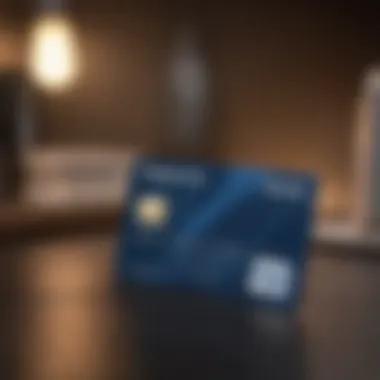
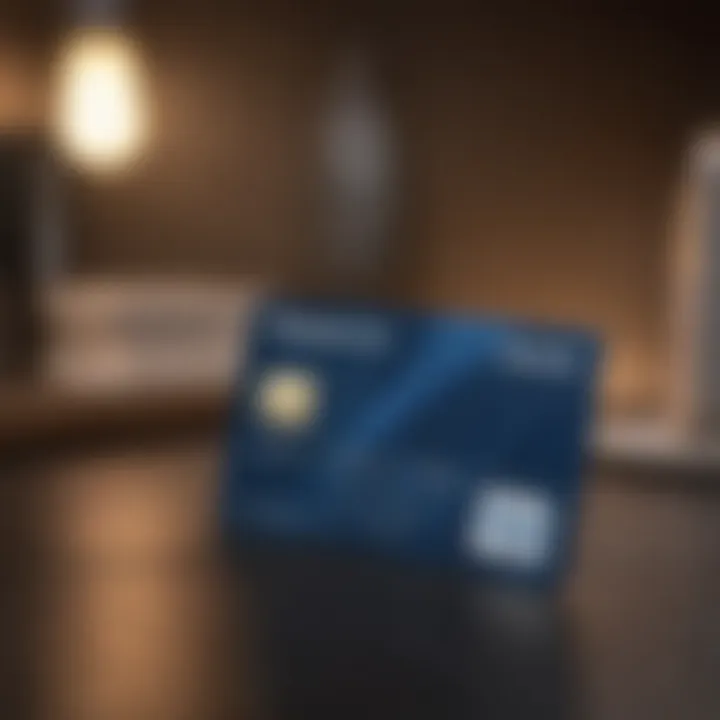
Intro
In the rapidly growing landscape of digital finance, understanding the tools at your disposal can be quite empowering. Virtual Visa cards, for example, have come a long way in providing an added layer of security and convenience for those engaging in online transactions. When coupled with PayPal, these digital cards create a formidable duo, perfectly suited for today’s internet-savvy consumers. The primary allure lies not just in the ease of use, but also in the peace of mind that comes from knowing your financial information is shielded from potential threats.
As we unpack this integration, we’ll explore how virtual Visa cards function, their compatibility with PayPal, and the manifold advantages they present, especially for businesses navigating the challenges of digital payments. This synthesis of knowledge aims to arm both novice and seasoned users with the insights necessary to navigate the evolving financial landscape.
Foreword to Virtual Visa Cards
Virtual Visa cards have become an indispensable part of today’s digital financial landscape. With the rise of online shopping, these cards provide a unique way to manage online transactions while keeping security at the forefront. Important to this article, virtual cards are not just a flashy new tool; they offer practical benefits that can significantly enhance the way users engage in digital commerce.
Definition and Overview
A Virtual Visa card is essentially a digital representation of a typical Visa card. While it shares many similarities with its physical counterpart, it exists only in digital form, allowing users to shop online without the need to carry a physical card. You obtain these cards from various financial institutions or through online platforms, often linking them to a personal or business account.
When you sign up for a virtual Visa card, you receive a card number, expiration date, and security code, just like you would with a traditional card. However, the big difference is that these details are often generated for temporary use. This is particularly beneficial for maintaining control over your financial information during online transactions.
Purpose and Benefits
One of the standout purposes of virtual Visa cards is to enhance security when shopping online. As more consumers face threats from data breaches and fraud, having a virtual card becomes a shield protecting their financial information. By using a virtual card, you limit the exposure of your primary card details. If a virtual card number is stolen, you can simply deactivate it and create a new one—this significantly reduces the risk of potential loss.
The benefits extend beyond security. Here are some notable advantages:
- Convenience: Virtual Visa cards are easy to obtain and use, streamlining the purchasing process without the hassle of physical cards.
- Budgeting Control: Users can set specific limits on their virtual cards, allowing for better management of spending, whether for personal budgeting or business expenses.
- Versatile Usability: They can be used for a variety of online services—from e-commerce to subscriptions—making them a flexible option for today’s digital consumer.
"Virtual Visa cards not only safeguard your financial data but also empower you to control how and where your money is spent."
In summary, virtual Visa cards are a noteworthy topic as we delve into the integration of these financial tools with services like PayPal. Their ability to bolster security, coupled with their practical benefits, make them a compelling option for anyone looking to navigate the often-risky waters of online transactions.
Understanding PayPal as a Financial Tool
PayPal has carved a niche for itself in the world of online transactions. It stands as a trusted intermediary, bridging payments between consumers and businesses across the globe. Understanding how PayPal operates is crucial, especially when integrating it with virtual Visa cards. This knowledge not only enhances user experience but also provides insights into maximizing the benefits these digital tools offer.
PayPal's Functionality
At its core, PayPal simplifies money transfers and payments. Users can send or receive funds using just an email address, which eliminates the need for sharing sensitive banking information. This particular feature is especially valuable for online shopping or when dealing with individuals you may not know. When linked with a virtual Visa card, users can fund their PayPal balance easily, thus streamlining their transactions.
PayPal supports various functionalities that cater to different needs. Here are some key aspects:
- Instant Transfers: Funds can be transferred quickly, allowing immediate access to money.
- Global Reach: Transactions can be made in multiple currencies, making international shopping a breeze.
- Mobile Accessibility: The PayPal app brings services right to your pocket, enabling transactions on-the-go.
- E-commerce Integration: Many online stores support PayPal, making it a preferred choice for purchases.
These functionalities position PayPal as not just a payment processor but as a comprehensive financial tool. With features that support both consumers and businesses, it makes perfect sense to integrate it with virtual Visa cards for enhanced efficiency.
Security Measures in Play
When dealing with online transactions, security stands at the forefront. PayPal employs various measures designed to protect its users which adds layers of safety when using virtual Visa cards in conjunction with it.
- Encryption Technologies: PayPal uses advanced encryption to protect personal and financial information during transactions.
- Two-Factor Authentication: Users can opt for two-factor authentication for an added layer of security. This means, apart from your password, a verification code sent to your registered mobile device is needed to access your account.
- Fraud Protection: PayPal monitors transactions for suspicious activity. If any anomalies are detected, they often alert users, reducing the risk of unauthorized transactions.
"With the integration of virtual Visa cards, these security measures bolster user confidence even more, ensuring personal information remains safeguarded."
These layers of protection exemplify PayPal's commitment to maintaining user security. Therefore, understanding its functionalities and security protocols not only helps users navigate the platform more confidently but also encourages them to leverage the advantages of virtual Visa cards effectively.
How Virtual Visa Cards Work with PayPal
Understanding how virtual Visa cards function with PayPal is crucial in grasping their overall impact on online transactions. These digital financial tools serve as a bridge, enhancing security and simplifying processes for users. As more people transition to cashless solutions and remote payments, the role these cards play becomes increasingly significant. They offer a way to merge the traditional principles of finance with the modern demands of digital commerce, making day-to-day transactions less risky and more manageable.
Linking Virtual Visa Cards to PayPal
Linking a virtual Visa card to a PayPal account is essentially a breeze, although it might vary slightly depending on the card provider. Most users will find the initial setup process straightforward. Here’s a quick rundown:
- Obtain a Virtual Visa Card: First things first, you need to acquire a virtual Visa card from a provider like Privacy or Neteller. Sign up on their site and choose your card options, which typically involves filling out basic personal information.
- Log into PayPal: Once you've received your card details (which often come via email), head over to your PayPal account and log in. If you don’t have an account, expect to sign up, which is pretty painless.
- Navigate to Wallet: Within your PayPal account, you will find a section labeled "Wallet". Here is where you can manage and link cards and bank accounts.
- Add Card Option: Select the option to add a card, then input the details of your virtual Visa card, such as the card number, expiration date, and CVV. Ensure every detail you enter is accurate to avoid any hiccups.
- Verification Process: Some providers might require a verification step where PayPal could charge a small amount to confirm your card is valid. This charge is usually reversed shortly after.
- Confirmation: Upon successful linking, you’ll receive a notification confirming your card is now associated with your PayPal account. Now you can start using it for your online purchases. It’s like putting on a new pair of shoes—once you've got them laced up, you’re ready to hit the pavement!


This integration contributes tremendously to the security of online purchases. With a virtual card, users can limit the amount they spend, protect personal data, and safeguard themselves from potential fraud. That makes linking these cards to PayPal a sensible choice for anyone who values security and ease in online transactions.
Transaction Process Overview
The transaction process when using a virtual Visa card with PayPal is relatively seamless and efficient. Here's a step-by-step look:
- Initiate Payment: When you're ready to make a purchase online, select PayPal at the checkout of your chosen merchant. No need to second guess your choice!
- Select Payment Method: Once redirected to PayPal, you’ll select your linked virtual Visa card as the payment method. This may also include options to use balances or linked bank accounts, but we’re focusing on our card here.
- Confirm Payment Details: Before finalizing the transaction, double-check the amount and your purchase details. After all, it’s important to ensure everything aligns and that you're not buying a cat in a bag, right?
- Authorization: PayPal will process the transaction request. If everything checks out, the payment is authorized quickly. Your virtual Visa card takes the hit for the purchase, deducting from its balance.
- Completion: Last but not least, you receive a confirmation of the transaction within PayPal and often through the merchant as well. This involves not just a thank-you note but sometimes even an e-receipt to keep records straight.
- Monitoring Transactions: Users can easily monitor transactions through PayPal to see all activities related to their virtual card. A word of caution though—keeping tabs on spending is always wise!
This method presents an opportunity for better financial management because it allows users to track their spending habits. The visibility provided can challenge overspending tendencies while encouraging responsible financial behavior. In the end, using both a virtual Visa card and PayPal together creates a user-friendly atmosphere where payments are safe, quick, and easy.
"Security, efficiency, and control come together when you integrate virtual Visa cards with PayPal, ensuring a smoother ride through the world of online payments."
Advantages of Using Virtual Visa Cards with PayPal
As the digital financial landscape continues to evolve, the use of virtual Visa cards in conjunction with platforms like PayPal has become increasingly relevant. Understanding the advantages these tools present is essential for both consumers and businesses looking to navigate online transactions securely and efficiently. By integrating these virtual cards with PayPal, users can experience a number of key benefits that enhance their overall purchasing experience.
Enhanced Security for Online Transactions
One of the most significant advantages of using virtual Visa cards with PayPal is undoubtedly the enhancement of security during online transactions. Virtual Visa cards provide each user with a unique card number that can be linked to their PayPal account, effectively acting as a buffer between their main account details and the online retailers. This method significantly reduces the risk of credit card fraud, as a compromised virtual card can be easily deactivated without affecting the primary card information.
In practical terms, when making a purchase, a user can generate a one-time-use card number designed specifically for that transaction. Even if the online store's server is breached, the exposure to personal financial data is limited. This precaution is especially important in an age where data breaches are increasingly common. For many, this level of security is a game changer, providing peace of mind while shopping online.
Limited Exposure of Personal Information
Another compelling aspect of virtual Visa cards is the limited exposure of personal information. Unlike traditional payment methods, where the card number, billing address, and other sensitive details are shared with merchants during a transaction, a virtual card operates differently. By utilizing a virtual Visa card, sensitive information remains concealed, allowing users to make purchases while keeping their primary account details shielded from view.
This limited exposure not only fosters a layer of privacy but also helps in curtailing unwanted marketing or spam that often follows when personal data is shared online. The implications are clear—businesses receive only what they need to complete a transaction, and customers can engage with a greater sense of security.
"With virtual cards, it’s like donning an invisibility cloak as you navigate through the complexities of the online shopping mall."
Control Over Spending Limits
The financial control offered by virtual Visa cards is another advantage that cannot be overlooked. When it comes to budgeting, virtual cards can certainly aid users in managing their spending with precision. Each virtual card can be assigned a specific spending limit, meaning users can cap their expenses according to their financial goals or personal budgets. This feature is particularly useful for those who may struggle with impulse purchases or for parents looking to monitor their children's online spending habits.
By issuing a card with a predetermined limit, users can engage in online transactions without worrying about unexpected charges exceeding their budget. Moreover, users can also set expiration dates for these virtual cards, ensuring they remain in control of their financial dealings. In this way, virtual Visa cards can serve as effective tools for not only improving security but also reinforcing good financial habits.
In summary, the integration of virtual Visa cards with PayPal comes packed with advantages that enhance both security and financial control. From protecting personal information to offering a budgeting tool, these cards elevate the online shopping experience to a new level, ensuring that users navigate the digital marketplace with confidence.
Practical Applications of Virtual Visa Cards with PayPal
When it comes to modern finance, Virtual Visa cards and PayPal make quite the dynamic duo. As we dive into their practical applications, it's essential to understand that they don't just coexist; they complement each other in myriad ways. The intersection of these digital tools opens up new avenues for online transactions, providing both shoppers and businesses with flexibility, security, and control over their finances.
E-commerce Transactions
In the world of e-commerce, the synergy between Virtual Visa cards and PayPal is apparent. When shopping online, consumers are always on the lookout for methods that enhance their security without forsaking convenience. A Virtual Visa card generates a unique number specifically for a transaction, which can help mitigate risks related to fraud. With cyber attacks becoming all too common, the promise of not revealing one's actual card details feels like a breath of fresh air.
Once linked to a PayPal account, making purchases becomes as easy as pie. Just select PayPal at checkout and choose the particular Virtual Visa card to fund the purchase. This combination ensures that business owners can also enjoy quicker transactions while maintaining their customers' trust.
Moreover, the ease of managing multiple Virtual Visa cards through PayPal allows consumers to keep their spending organized. They can create separate cards for specific purposes, like online shopping, travel, or even subscriptions, which is like having a financial arsenal at your disposal.
Subscriptions and Recurring Payments
For those who subscribe to a variety of services, whether it's streaming platforms, magazines, or other membership-based offerings, Virtual Visa cards through PayPal can streamline the payment process. By using a Virtual Visa card linked to a PayPal account, users can easily manage these recurrent payments. If someone wishes to keep their spending in check, they can generate a Virtual Visa card specific to a subscription service, effectively setting a kind of budget in place.
Another key benefit is the ease with which users can cancel or modify these subscriptions. If a particular service no longer fits the bill, simply updating the associated Virtual Visa card or even deleting it ensures that no further payments can be processed. This level of control provides a sense of empowerment, especially for those who juggle numerous subscriptions. But remember, this added layer of oversight comes handy only as long as users keep track of their spending habits.
International Transactions and Travel
Traveling or making purchases across borders can often come with its own set of challenges. However, integrating a Virtual Visa card with PayPal can alleviate many of these hurdles. By using a Virtual Visa card, travelers can access their funds from anywhere without worrying about hidden fees often associated with international transactions. Plus, they are safeguarded from potential currency conversion gouges that traditional banking methods might impose.
In regions where PayPal is accepted, using a Virtual Visa card can streamline convenience and safety when purchasing goods and services. It's like having a global purse that is well secured and accessible, no matter where you go.
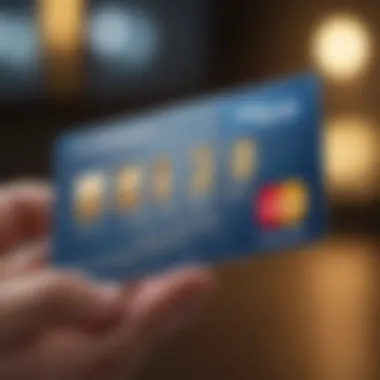
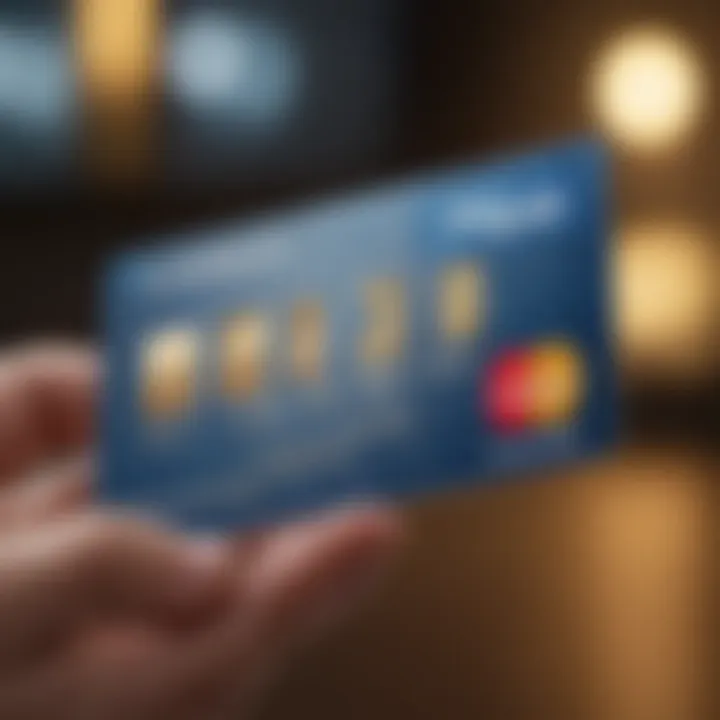
In sum, the practical applications of Virtual Visa cards with PayPal not only simplify e-commerce transactions but also enhance financial control, especially when managing subscriptions or traveling abroad. These tools elevate the digital spending experience by offering security and convenience in one neat package.
Acquiring a Virtual Visa Card through PayPal
In today’s fast-paced digital marketplace, the ability to make secure transactions is more crucial than ever. Integrating a virtual Visa card with PayPal allows users to streamline their purchasing process while maintaining a high level of security. The importance of acquiring a virtual Visa card through PayPal lies in the flexibility and protective features it offers. From enjoying online anonymity to managing budgets with ease, virtual Visa cards can meet various needs across different user demographics.
Moreover, users benefit from instant access to funds without the delays sometimes associated with traditional bank transfers. This underscores the relevance of this topic within the broader context of digital finance. Understanding the acquisition process and the nuances behind selecting a card provider can enable both novice and experienced users to optimize their online payment experience.
Step-by-Step Process
Acquiring a virtual Visa card through PayPal is a straightforward procedure that can be broken down into several essential steps. Following these guidelines can ensure a seamless experience:
- Sign Into Your PayPal Account: The first step involves logging into your existing PayPal account. If you don’t have one yet, it’s crucial to sign up for an account at PayPal.
- Navigate to the Cards Section: Once logged in, locate the section for cards or wallet. This area typically lists options for adding or managing cards associated with your account.
- Choose to Get a Virtual Card: Look for the option to apply for a virtual Visa card. PayPal may guide you to various providers; hence it’s important to thoroughly review the listed benefits and fees.
- Fill Out Application Details: Input the necessary information required for the application, including personal identification and any verification details.
- Review Terms and Complete the Application: Before submitting, it’s essential to read the card's terms and conditions carefully. Make sure to confirm fees associated with activations or other transactions.
- Receive Your Card Details: Upon approval, you’ll receive your virtual card number, CVV, and expiration date. These will be emailed to you or displayed within your PayPal account.
- Linking and Using Your Card: Finally, you can now link this virtual Visa card for purchases on various e-commerce platforms or when paying for subscriptions.
Following these steps can make the process of acquiring a virtual Visa card simple and quick
Choosing a Card Provider
When deciding on a card provider, users should consider several factors to ensure they select the right fit for their specific needs.
- Reputation: Check for reviews or feedback regarding various providers. Providers like The Bancorp or Bank of America typically have sturdy reputations in the digital card market.
- Fees: Be aware of any initial start-up fees, maintenance fees, or transaction charges. Understanding these can save you from hidden surprises later on.
- Customer Support: A reliable customer service team can be a lifesaver if you encounter issues.
- Extra Features: Some providers may offer additional perks such as cash-back options or enhanced security features which might be useful.
Ultimately, your choice of a card provider can significantly influence your online financial experience. Thorough research and consideration can lead to a more satisfying experience with less hassle.
"Before diving into the digital financial seas, it’s smart to scout the terrain; knowing your provider can make all the difference."
Fees and Considerations
Understanding the fees associated with virtual Visa cards and their use with PayPal is crucial for anyone looking to optimize their online transactions. This section will provide insight into potential costs incurred and conduct a comparative analysis of fees. Knowing about fees not only helps in budgeting but also plays a vital role in assessing the overall value of using these digital tools over traditional payment methods.
Potential Costs Incurred
When diving into the world of virtual Visa cards, one must consider various costs that may arise after signing up. While these cards often advertise low initial fees, a deeper dive reveals different costs that can catch users off guard:
- Card Issue Fees: Many providers charge a small fee for issuing a virtual card. This is usually a one-time cost, but it can vary depending on the issuer.
- Transaction Fees: Every time you use your virtual card to make a payment, a transaction fee might apply. This fee can differ based on the nature of the transaction.
- Foreign Transaction Fees: If you plan to transact internationally, be wary of foreign transaction fees. While PayPal typically charges this for cross-border payments, virtual cards can have their own added cost.
- Monthly Fees: Some virtual Visa card services may have a monthly maintenance fee that accumulates throughout the year.
Users should carefully read the fine print and ask questions to avoid pesky surprises when they try to use their virtual cards for the first time. It's recommended to keep a budget for these potential costs to understand how they affect overall spending.
Comparative Analysis of Fees
Evaluating the fees associated with virtual Visa cards against traditional payment methods sheds light on their effectiveness. Here are some points for comparison:
- Virtual Cards vs. Bank Cards: While most banks offer debit and credit cards for free, they often come with interest rates that can pile up, especially in the case of credit cards. Virtual Visa cards sometimes charge a fee but can be a cost-efficient option if you aim to stay within your budget without worrying about accruing interest.
- Convenience Fees: When using e-wallet services like PayPal, some merchants might charge a convenience fee for card transactions. Virtual cards might not always avoid this charge, so it’s essential to compare the total expenses.
- Loyalty Rewards: Some traditional credit cards come with loyalty programs and allows users to earn points on transactions, which might balance out some fees in the long run. Virtual Visa cards usually lack this feature.
"Balancing convenience and cost can make all the difference in your online financial ventures. Knowledge is your best ally!"
As you navigate these waters, paying close attention to fees will ensure you’re always getting the best bang for your buck.
Comparative Benefits Over Traditional Payment Methods
In today’s fast-paced digital landscape, the emergence of virtual Visa cards has paved the way for a seismic shift in how transactions are processed. When comparing these virtual cards to traditional payment methods, a notable gap reveals itself; one that signals not only a shift in consumer habits but also an evolution in financial technology.
Virtual Visa Cards vs. Physical Cards
Virtual Visa cards have a say in the daily transactions everyone undertakes. Unlike their physical counterparts, virtual cards do not carry the risk of theft or loss. Once your physical card is gone, it can create a real headache. Virtual cards, however, can be generated quickly and can easily be deactivated if compromised. Customers are increasingly favoring this option for online shopping, as the card number is designed for one-time use or to be utilized within a limited time frame.
- Enhanced Security: When making purchases, users can create virtual cards with specific limits. This means even if a hacker gets hold of the card details, the damages can be minimal.
- Convenience: Forgetting a card at home? Not an issue! Virtual cards can be accessed and used from any device connected to the internet, offering flexibility that physical cards simply can’t match.
- No issuance fees: Many virtual cards can be acquired at no extra costs, unlike physical ones which often come tacked with fees. This makes it easier for users to manage their finances without hidden expenses.
Moreover, there are also often fewer restrictions on where virtual cards can be used, which makes them an accessible choice for international transactions. Physical cards may have stipulations based on the user’s geography, but with virtual options, this is often not a concern.
Adaptation to Digital Payment Trends
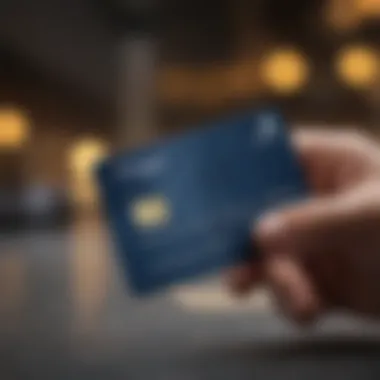
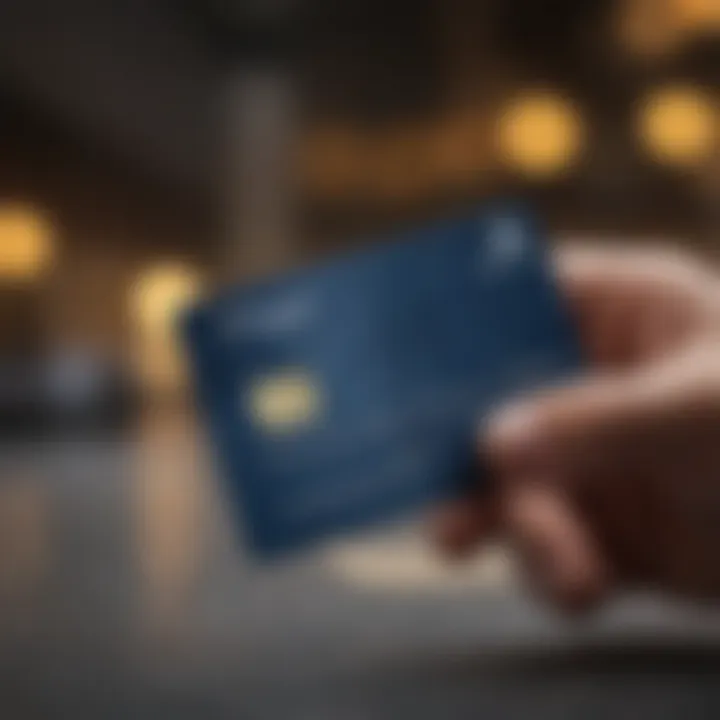
The adaptation to digital payment trends is crucial in understanding why virtual Visa cards are becoming the preferred payment option for contingencies ranging from e-commerce to regular grocery shopping. As consumers grow more accustomed to digital and online banking systems, traditional methods are gradually becoming less appealing. One of the primary advantages of virtual cards is the growing acceptance of digital alternatives across numerous platforms and businesses.
- Evolving Consumer Behavior: People are moving away from writing checks and using cash in favor of methods that offer both speed and efficient tracking of expenditures. Virtual cards fit the bill perfectly.
- Rise of E-commerce: With online shopping becoming the norm rather than the exception, the compatibility of virtual Visa cards with platforms such as PayPal enhances their usability, making transactions smoother and safer. This integration allows users to take advantage of the built-in protections offered by PayPal, essentially providing a double layer of security during purchases.
- Growing Demand for Contactless Payments: The global pandemic has only accelerated the shift towards contactless payments, as people prioritize safety. This trend emphasizes a broader public move towards digital solutions, setting the stage for the adoption of virtual cards.
"The future is not just about adapting to change, but thriving in it. Virtual payments are leading the charge for convenience and security."
Ultimately, the comparative advantages presented by virtual Visa cards in navigating the financial landscape indicate that they are not merely a passing trend. Instead, they represent a significant transformation in how we think about spending and security in finance. As consumers and businesses alike acknowledge these benefits, the shift away from traditional payment methods is destined to continue.
Challenges and Limitations
While virtual Visa cards provide undeniable advantages, there are a few bumps in the road that users may encounter. Understanding these challenges can help individuals and businesses navigate their digital payment landscape more robustly. Addressing compatibility issues and geographical restrictions are not just a simple afterthought; these elements are crucial for ensuring a seamless experience when integrating these cards with PayPal.
Compatibility Issues
One of the primary concerns regarding virtual Visa cards is their compatibility with various platforms and merchants. Not every online retailer or service provider accepts virtual cards, often leading to frustration at the checkout. Users might find themselves in a catch-22 situation where they've taken measures to safeguard their financial details, only to be faced with a limitation at the point of sale.
Moreover, certain websites implement extra measures to detect fraudulent activities, which can lead to legitimate transactions being flagged. This could force users to go through hoops to finalize their purchases. For instance, some merchants may only accept traditional credit or debit cards, leaving the users of virtual cards high and dry. Therefore, it’s smart to check with the vendor first before banking on using a virtual card to cover the cost.
“Knowing where virtual Visa cards fit best can save customers from unwanted headaches later.”
Restrictions Based on Geography
Geographical limitations present another significant hurdle for users wanting to harness the power of virtual Visa cards with PayPal. Not all countries support these digital payment methods, which can significantly affect travelers and expatriates. For example, someone residing in a country where virtual cards are unavailable may find themselves stuck without adequate payment options when making online purchases.
In some regions, local regulations complicate the use of virtual cards, sometimes leading to unexpected transaction declines due to non-compliance with local laws. This can be particularly troublesome for international businesses that rely on cross-border transactions.
It's worth noting that while PayPal has made strides in expanding its global outreach, it’s not universal. Availability and functionality can vary, leaving users without their preferred payment method in certain scenarios. Often, users have to jump through additional hoops, such as verifying their identity or setting up multiple accounts to navigate these restrictions.
Future Trends in Virtual Payment Systems
The ongoing evolution of digital transactions is reshaping how consumers and businesses interact in financial landscapes. Within this context, understanding the future trends in virtual payment systems is not just beneficial; it is essential for staying competitive and secure. As more people are shifting towards online shopping, the integration of virtual Visa cards with platforms like PayPal represents a growing trend that many should keep an eye on. These advancements hold promise for increased security, convenience, and broader acceptance across various markets.
The Rise of Digital Wallets
With the accelerating pace of technology, digital wallets are swiftly becoming the go-to choice for consumers who seek speed and efficiency when making payments. These wallets enable users to store multiple forms of payment in one location, streamlining the checkout process in stores and online. For anyone who’s tired of fishing for credit cards amid a pile of receipts, it’s a refreshing change.
Digital wallets, when linked to virtual Visa cards, can offer benefits such as:
- Increased Security: Virtual cards deal with one-time-use numbers for transactions, minimizing the risk of fraud.
- Convenience: Once set up, digital wallets make transactions a breeze, allowing users to pay with just a few taps.
- Seamless Integration: Many online merchants now accept digital wallets, making them universally recognized as payment solutions.
The attraction of digital wallets lies not only in their ease of use but also in their adaptability. As consumer habits evolve, these wallets are becoming more sophisticated, incorporating features that enhance user experience while reinforcing security. Users will likely see more innovative features as developers respond to demand for more comprehensive financial tools.
Integration with Emerging Technologies
Emerging technologies, such as blockchain and artificial intelligence, are transforming the landscape of digital finances significantly. The integration of these technologies with virtual Visa cards and digital payment systems, like PayPal, further boosts their efficacy and user trust.
- Blockchain Technology: blockchain can provide a transparent transaction history, ensuring that users can track their purchases without compromising sensitive data. This technology adds an extra layer of reassurance for users concerned about security.
- AI and Machine Learning: AI algorithms can analyze spending habits, helping consumers manage their finances better. Additionally, they can detect and alert users about potential fraudulent activities in real-time, providing peace of mind.
Using virtual Visa cards within these innovative frameworks can also lead to faster transaction times. As systems become more efficient, consumers stand to gain from lower fees and quicker fund transfers, encouraging even broader adoption of digital payment methods.
"As technology continues to evolve, understanding and adapting to upcoming trends in virtual payment systems is no longer optional for businesses; it's a necessity."
Closure
Concluding an exploration of the integration of virtual Visa cards with PayPal highlights a multifaceted relationship that continues to evolve. The significance of this topic lies not only in understanding how these digital tools work together but also in recognizing the broader implications for users. As more people embrace online payment methods, the discussion around virtual Visa cards becomes crucial. Their role in enhancing security during transactions has been emphasized, addressing the common concerns linked with sharing personal financial information.
Summarization of Key Points
Summarizing the insights shared throughout this article, we can pinpoint several vital elements:
- Enhanced Security: Virtual Visa cards provide an added layer of protection, ensuring that users' actual card information remains safeguarded from potential fraud.
- Convenience of Use: The ability to transact seamlessly through PayPal broadens the accessibility of online shopping, making it user-friendly for everyone, regardless of their familiarity with digital payments.
- Versatility: From e-commerce purchases to monthly subscriptions, the integration allows users to adapt the tool for various financial needs.
- Lower Risk of Over-Spending: Control over spending limits associated with these virtual cards can help individuals manage their budgets more effectively.
- Global Reach: These cards are also beneficial for international transactions, providing options for users traveling abroad or engaging in global online shopping.
These factors collectively underline the relevance of virtual Visa cards in today's financial landscape, making them an invaluable asset for diverse users, from casual shoppers to business operators.
Final Thoughts on the Role of Virtual Visa Cards in Digital Payments
As digital payment options continue to expand, the role of virtual Visa cards in shaping user experience cannot be understated. They bridge the gap between safety and convenience in online transactions, catering to a growing demographic of tech-savvy consumers. Moreover, their integration with platforms like PayPal has redefined how people approach digital payments. Security concerns that once plagued online transactions are mitigated, allowing users to embrace the benefits of e-commerce without the shadows of uncertainty hanging over them.
Reflecting on this phenomena, it is evident that the pros greatly outweigh the cons. While challenges exist, the advantages offered create a compelling case for their use in various financial contexts. As we move forward, it will be fascinating to observe how the continuing advancements in technology pave the way for even more secure and efficient payment solutions. In a nutshell, virtual Visa cards, in tandem with platforms like PayPal, are not just enhancing the modern payment experience; they are setting benchmarks for how financial transactions should be conducted in our increasingly digital world.



